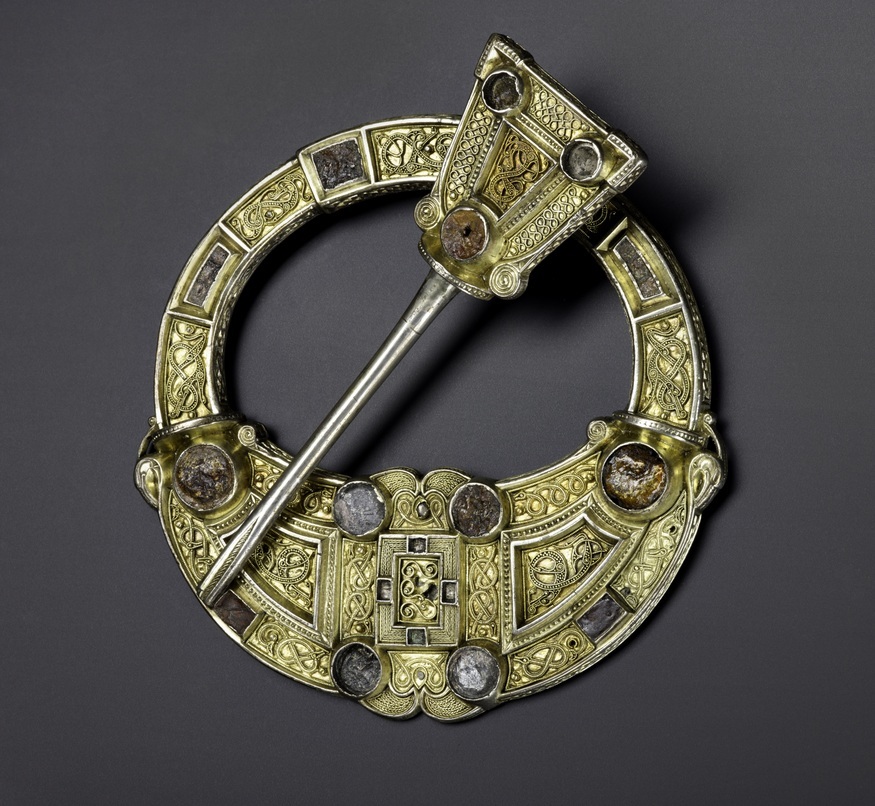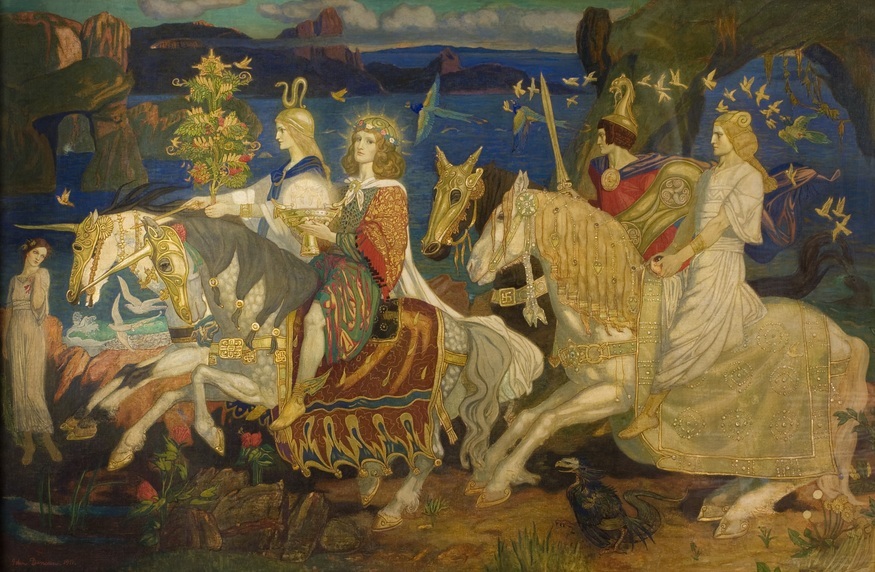Who Were The Celts? The British Museum Explains All

Who were the Celts? In our minds the phrase conjures up two images; a fearsome warrior people, and a mystic cult of druids. Much like it did with the Vikings, the British Museum has set out to cut through the mythos and focus instead on hard facts to paint an accurate picture of these people.
The exhibition opens dramatically with three eye-catching objects — a remarkably well preserved stone cross, a shimmering banner with a red dragon at its centre and a delicately carved wooden harp. It also clarifies that the classification of Celts varies; the Romans applied the title to several different peoples across Europe.
This is followed by an insightful comparison of a Celtic helmet with horns with a more pragmatic Greek helmet. These two would have faced off in battles, with the Celts looking to inspire fear in their enemies and the Romans (wearing helmets of Greek design) focussed on protecting themselves in a more practical fashion. Accompanied by a video timeline that sets out key moments in Celtic history, the introductory section of this exhibition is perfect and, importantly, hooks you in.
Unfortunately from then on things start to wane. Marvellous objects are on display, including elaborate torcs (necklaces) and brooches, but there must be over 100 pieces of jewellery here — sure they are magnificent, but do we really need to see so many minor variations of the same object? We thought the British Museum had learned that less is more, as displayed in the excellent Germany and Defining Beauty, but alas they've once again fallen prey to the desire to cram as much as they have available into a show.
That's not to say it's all gratuitous; the middle section has some great works including a monumental cross superbly lit to inspire awe, the sinuous, graceful lines of Celtic shields, an elaborate war horn and a massive, beautifully carved cauldron (see main image).
The last section feels like a separate exhibition; it looks at the legacy of Celtic influence including a revival in the Celtic style in the 19th century, right through to modern day with an Asterix comic and a Celtic football shirt. It all feels rushed; a forced attempt to try and relate to the modern day, thus disrupting the steady flow of the exhibition.
There are some truly spectacular objects and artefacts in this show and it all starts so promisingly. However, the ponderous middle and the muddled final third take the shine off. A tighter scope and a more sparing use of items could have made this a special show. Instead we're left with a solid exhibition, but one that falls below the usual British Museum standard.
Celts: Art and Identity is on at the British Museum until 31 January 2016. Tickets are £16.50 for adults, concessions available. Also still on at the museum are the excellent drawings in Silver and Gold and a small display on Manga.
Also nearby are the political art of Ai Weiwei, Nightlife at the London Transport Museum and the macabre procession by William Kentridge. For more exciting exhibitions see our top 10 picks for this autumn and September.





Last Updated 05 November 2015




